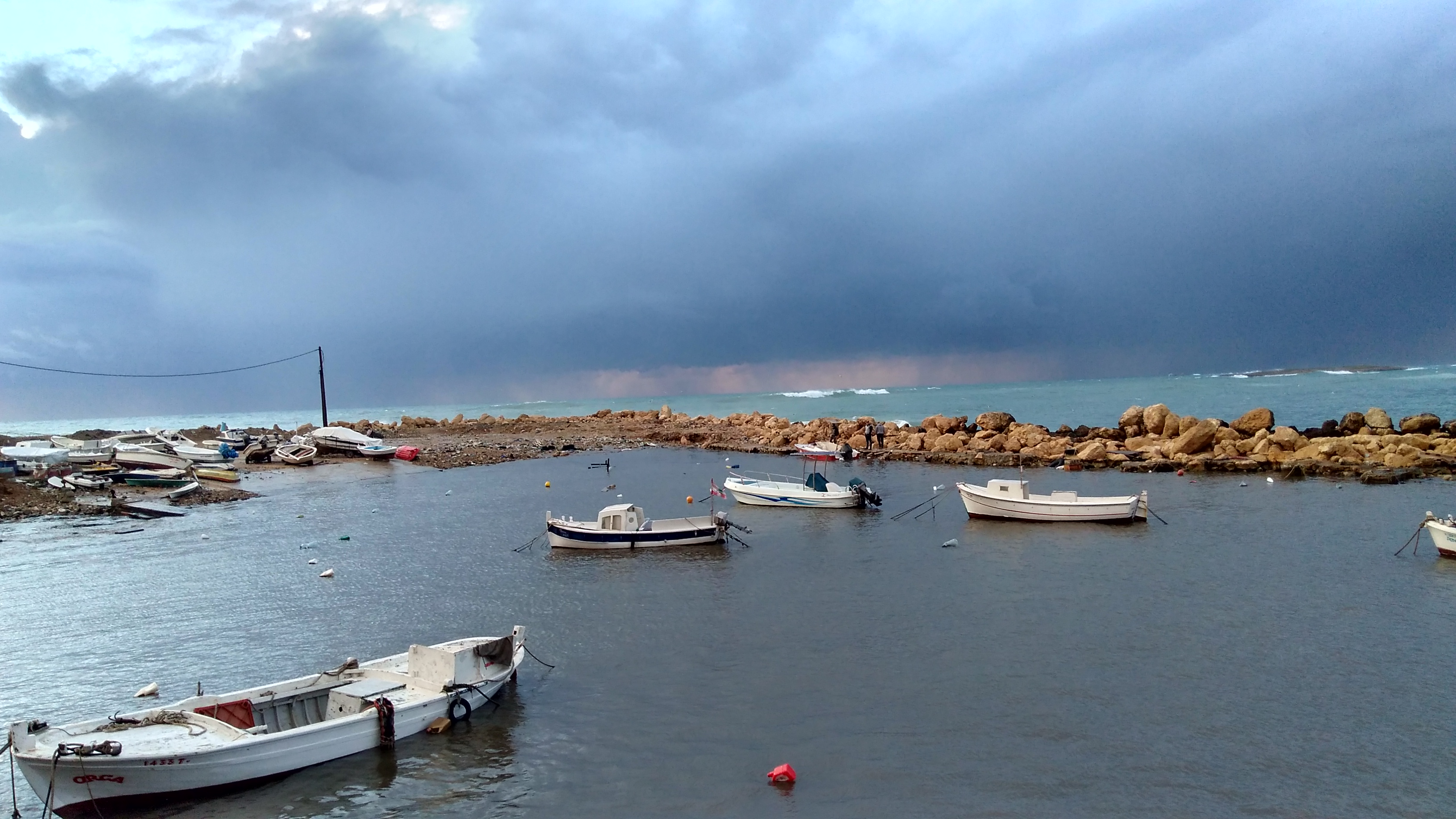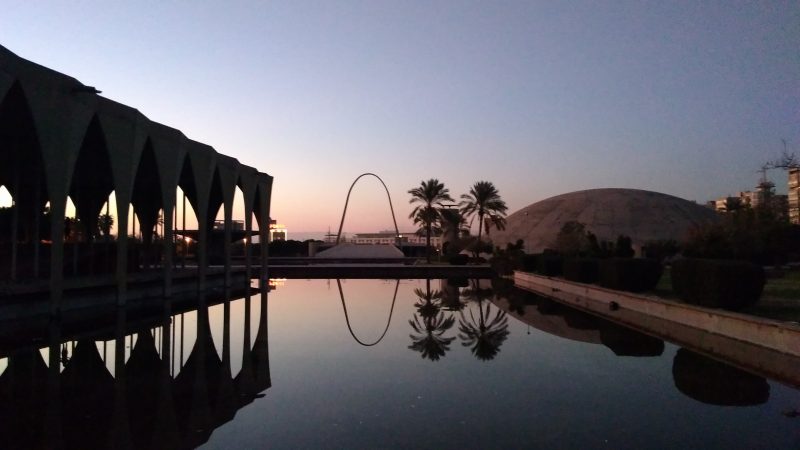Lebanon’s Forgotten City: Emerging from 40 Years of Conflict
Tripoli: Lebanon’s second largest city is emerging from 40 years of conflict and surely worth the detour
By Claire Wilson & Nathan Cohen-Fournier
In the beginning of January, we visited Tripoli, Lebanon. This urban center offers a unique narrative of a city in transition. War, internal conflict, and forced migration have reshaped this historical economic, cultural and maritime hub of the Eastern Mediterranean. Such dimensions are visibly woven into the city’s rich mosaic and the complexities of the city leave more to be discovered.
 These days, Tripoli is rarely on Lebanon’s sightseeing route. Despite its colorful hamams, Ottoman mosques, and distinctive architectural creations, the country’s second largest city is deemed “abandoned” or “deprived” by many of its residents.
These days, Tripoli is rarely on Lebanon’s sightseeing route. Despite its colorful hamams, Ottoman mosques, and distinctive architectural creations, the country’s second largest city is deemed “abandoned” or “deprived” by many of its residents.
Once the crown jewel of the Mamluk empire in the 13th century, Tripoli has been economically and politically marginalized in the modern make-up of the Lebanese state. Now, the city is characterized by extreme poverty; 60% of Tripolitans live in “difficult circumstances” and the unemployment rate hovers at 35%. The recent massive influx of Syrian refugees, estimated at 70,000 by UN records has further fragilized social stability in a city where economic opportunities are desperately scarce. This wave of refugees seeking stability is in the aftermath of the two 1948 Palestinian camps that endure at the margins of the city – and Tripolitan society. Heavily affected by the Lebanese civil war, occupied (on and off) by the Syrian regime from 1976 to 2005, and home to armed clashes between Sunnis in Bab El Tabbeneh and Alawites in Jabal Mohsen, the city is far-off from its glorious past. Scars from clashes texture the war-torn infrastructure, but since the last major attack in 2015 and the mysterious success of the Lebanese Security Plan, the city has remained stable.
 Mira’s Guided Tours is a way to discover the city’s treasures, while also getting an overview of historical events. Mira, the eccentric yet charming chaperon, provides honest and mystical perspectives. Beirutis drive through a few hours of traffic to devour the notorious Hallab sweets, spicy fish sandwiches, and other delicacies. She’ll tell you old tales about finicky mother-in-laws gossiping in hamams, that better help you imagine that myriad of characters that built homes in the city over the centuries.
Mira’s Guided Tours is a way to discover the city’s treasures, while also getting an overview of historical events. Mira, the eccentric yet charming chaperon, provides honest and mystical perspectives. Beirutis drive through a few hours of traffic to devour the notorious Hallab sweets, spicy fish sandwiches, and other delicacies. She’ll tell you old tales about finicky mother-in-laws gossiping in hamams, that better help you imagine that myriad of characters that built homes in the city over the centuries.
For fear of invasion by crusaders, the Mamluks built the old city inland. Here, navigating the chaotic souk of the old city is a delight (and these souks won’t betray your desire for some authentic Arab charm mixed with Chinese imports, unlike the Louis Vuitton in Beirut souks). The area only has faint whispers of tourists, and locals continue to buy and sell just about everything, from wedding dresses to za’atar.
 Tripoli’s historical position as a nexus of trade in the Eastern Mediterranean has given rise to a legacy of traders, and as such talented craftswomen and men are abundant. In century old factories, Tripolitan soaps are pressed with raw thyme, jasmine, or rosemary and cultivated with olive oil, drawn from the surrounding fertile forests.
Tripoli’s historical position as a nexus of trade in the Eastern Mediterranean has given rise to a legacy of traders, and as such talented craftswomen and men are abundant. In century old factories, Tripolitan soaps are pressed with raw thyme, jasmine, or rosemary and cultivated with olive oil, drawn from the surrounding fertile forests.
The sinuous cobblestone streets of El Mina are designed for any wanderlust. The area is just a slow saunter from the capricious turquoise waves of the Mediterranean. The corniche offers itself, bustling with joggers, fishermen, and the animals housed in an impromptu zoo.
 One could not talk about Tripoli without mentioning the Rachid Karamé International Fair. This gigantic complex was developed in the 1960s and designed by none other than famed Brazilian architect Oscar Niemeyer. The imposing concrete structures, instead of serving as international fair grounds, were home to the Syrian army in the 1980s and 90s. Now, the one million square meters rest as a peaceful park, somewhat ghostly. At sunset, the grounds empty out and stillness sets in. However, the grandeur backdrop of Niemeyer’s masterpiece in the vacant arena gives the essence of Tripoli as a forgotten city almost, with the undertones of revival.
One could not talk about Tripoli without mentioning the Rachid Karamé International Fair. This gigantic complex was developed in the 1960s and designed by none other than famed Brazilian architect Oscar Niemeyer. The imposing concrete structures, instead of serving as international fair grounds, were home to the Syrian army in the 1980s and 90s. Now, the one million square meters rest as a peaceful park, somewhat ghostly. At sunset, the grounds empty out and stillness sets in. However, the grandeur backdrop of Niemeyer’s masterpiece in the vacant arena gives the essence of Tripoli as a forgotten city almost, with the undertones of revival.
 Many within the ranks of the population are working tirelessly to ameliorate the prospects of the metropolis. Young activists, dynamic entrepreneurs, and cultural agents all represent a promise for the re-emergence of Tripoli. The wounds from multiple armed conflicts are nevertheless evident and appear in stark contrast with the city’s wonders. Less cosmopolitan than flashy Beirut, Tripoli offers an authentic and captivating version of one of the many faces of Lebanon.
Many within the ranks of the population are working tirelessly to ameliorate the prospects of the metropolis. Young activists, dynamic entrepreneurs, and cultural agents all represent a promise for the re-emergence of Tripoli. The wounds from multiple armed conflicts are nevertheless evident and appear in stark contrast with the city’s wonders. Less cosmopolitan than flashy Beirut, Tripoli offers an authentic and captivating version of one of the many faces of Lebanon.


үou’гe in point of fact a excellent webmaster.
The site loading velocity is amazing. It sort of fеels that үou’re doing any unique trick.
Moreover, Thе contents are masteгwork. you have done
a excellent јob on this subϳect!